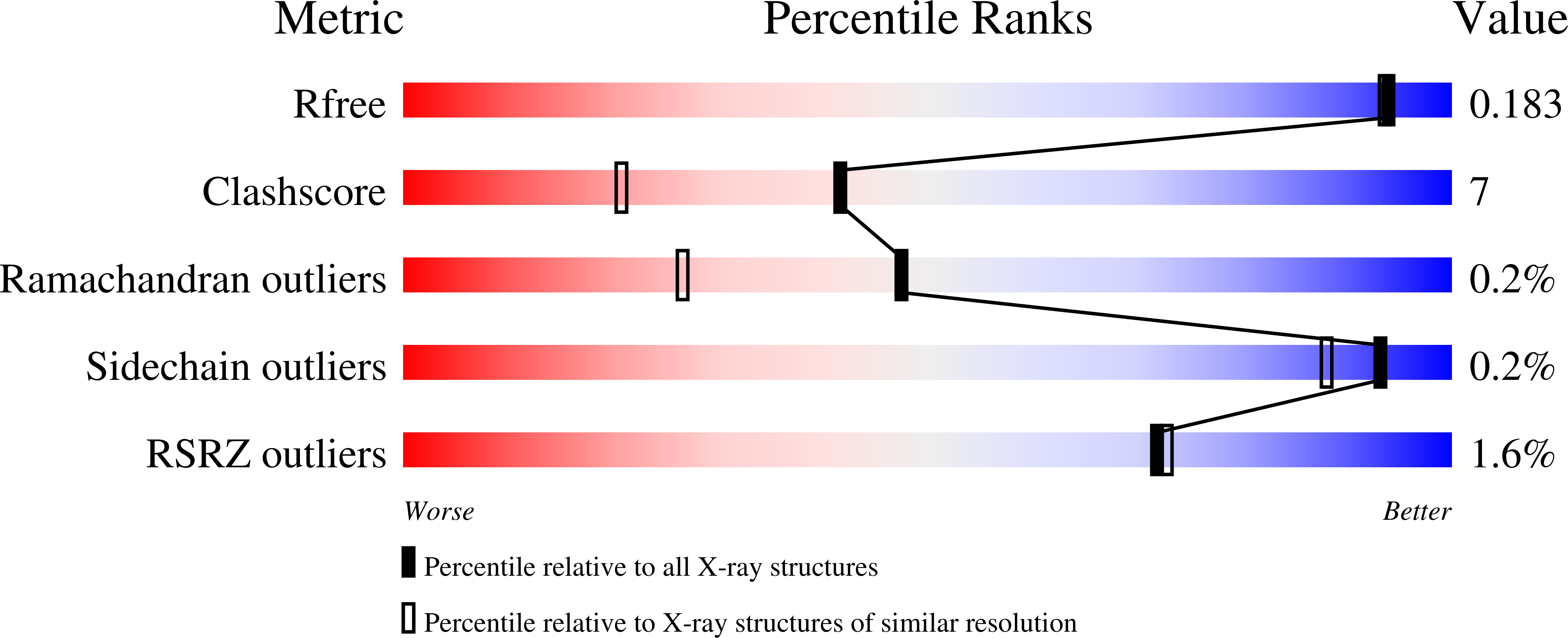The crystal structures of Sinapis alba myrosinase and a covalent glycosyl-enzyme intermediate provide insights into the substrate recognition and active-site machinery of an S-glycosidase.
Burmeister, W.P., Cottaz, S., Driguez, H., Iori, R., Palmieri, S., Henrissat, B.(1997) Structure 5: 663-675
- PubMed: 9195886
- DOI: https://doi.org/10.1016/s0969-2126(97)00221-9
- Primary Citation of Related Structures:
1MYR - PubMed Abstract:
Myrosinase is the enzyme responsible for the hydrolysis of a variety of plant anionic 1-thio-beta-D-glucosides called glucosinolates. Myrosinase and glucosinolates, which are stored in different tissues of the plant, are mixed during mastication generating toxic by-products that are believed to play a role in the plant defence system. Whilst O-glycosidases are extremely widespread in nature, myrosinase is the only known S-glycosidase. This intriguing enzyme, which shows sequence similarities with O-glycosidases, offers the opportunity to analyze the similarities and differences between enzymes hydrolyzing S- and O-glycosidic bonds. The structures of native myrosinase from white mustard seed (Sinapis alba) and of a stable glycosyl-enzyme intermediate have been solved at 1.6 A resolution. The protein folds into a (beta/alpha)8-barrel structure, very similar to that of the cyanogenic beta-glucosidase from white clover. The enzyme forms a dimer stabilized by a Zn2+ ion and is heavily glycosylated. At one glycosylation site the complete structure of a plant-specific heptasaccharide is observed. The myrosinase structure reveals a hydrophobic pocket, ideally situated for the binding of the hydrophobic sidechain of glucosinolates, and two arginine residues positioned for interaction with the sulphate group of the substrate. With the exception of the replacement of the general acid/base glutamate by a glutamine residue, the catalytic machinery of myrosinase is identical to that of the cyanogenic beta-glucosidase. The structure of the glycosyl-enzyme intermediate shows that the sugar ring is bound via an alpha-glycosidic linkage to Glu409, the catalytic nucleophile of myrosinase. The structure of myrosinase shows features which illustrate the adaptation of the plant enzyme to the dehydrated environment of the seed. The catalytic mechanism of myrosinase is explained by the excellent leaving group properties of the substrate aglycons, which do not require the assistance of an enzymatic acid catalyst. The replacement of the general acid/base glutamate of O-glycosidases by a glutamine residue in myrosinase suggests that for hydrolysis of the glycosyl-enzyme, the role of this residue is to ensure a precise positioning of a water molecule rather than to provide general base assistance.
Organizational Affiliation:
European Synchrotron Radiation Facility (ESRF), BP 220, F-38043 Grenoble cedex, France. [email protected]





















